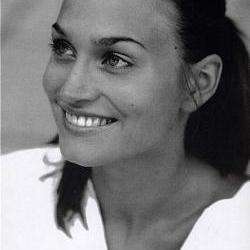Pierre Beaumarchais’ theatrical Figaro triology provides the basis for two of the most beloved operas in modern operatic repertoire: Rossini’s Il barbiere di Siviglia and Mozart’s Le Nozze di Figaro, as well as a host of other less successful works. Theater an der Wien, after presenting Giovanni Paisiello’s lesser known setting of Le barbier de Séville in February and Mozart’s classic Figaro in April is presenting the final chapter, La mère coupable (The Guilty Mother) Beaumarchais’ final play, which was set by Darious Milhaud in 1966. Although an interesting and worthy experiment, the result in this case is by and large frustrating for a number of reasons.
Beaumarchais’ drame morale traces the escapades of Suzanna, Figaro, Count Almaviva and the Countess some twenty years post-Figaro and is downright tragic compared to both its predecessors. In brief, over the years Rosina and the Count have both had indiscretions resulting in illegitimate offspring. The Count has taken in young Florestine as his ward, but she is in actuality his daughter, and the pair are also raising Léon, the product of Rosina’s affair with Cherubino, who died long ago in battle. Almaviva has long suspected that Léon is not his own son and their relationship is uneasy. Moreover, the Count and Countess’ only legitimate offspring died in a duel. These disappointments and betrayals haunt their relationship. Figaro and Suzanne have stayed together and are still in their service, but their marriage is likewise strained. Throw into the mix an intriguing Irish gold-digger named Bégearss who has ingrained himself, Tartuffe-like, into the family and the fact that Léon and Florestine are in love with each other and you can imagine the kinds of knots which need to be untangled.
This complicated plot, set by Milhaud in the original French was not clarified by director Herbert Föttinger. Instead, an additional layer to the confusion was added by doubles who portray scenes from the protagonists’ pasts and their inner motivations. I have no objection per se with naked women bathing in blood, masturbating to crucifixes or being flagellated by priests in confessional booths, but only if it somehow aids our understanding of the story. Unfortunately, despite a very promising opening set of scenes in the overture, Föttinger ran out of good ideas long before the close. The only additions double-wise in the entire third act include a repeat of the naked countess bathing in blood, figures in suits walking aimlessly through leaves and a naked countess struggling, bound to a headboard. More disturbingly the guilt in this production is completely one-sided giving the entire Regie a blatantly unmodern and sexist bent. Beaumarchais, writing in the 18th century, shares his guilt between the sexes. Almaviva declares himself to be “more guilty than any of you”, yet in this production he remains completely clad as does every other male figure while the women (generally nude) are debased by the males in every second tableau.
Musically, the evening was only slightly less difficult to take. Much of the singing was superb (standouts included the slick portrayal of con-man Stephan Loges (Bérgeass), the crystal clear sublimity of coloratura Frederikke Kampmann (Florestine) who was granted the one beautiful, nearly melodic aria in the piece, the dramatic and vocal power of Aris Argiris (Figaro) and the strength of presence of inimitable Angelika Kirchschlager (Suzanne), but Milhaud did not write kindly for the voice, nor did he score lightly enough to allow the voices their chance to shine. The beautiful, slender tenor of Andrew Owens (Léon) remained buried, and the low ranges of the very capable Markus Butter (Almaviva) failed to carry while the colour of the accomplished Mireille Delunsch (Rosina) sounded strident in her efforts to cut through.
Scoring aside, the Vienna RSO under the baton of Leo Hussain was not comfortable enough with the less-than-helpful score to give it the French transparency and longer sense of phrasing and line that would have helped it immensely. Every tiny motif was played concretely which, compounded with the lack of larger architectural order lost sight of the forest for all the trees. At the end of the night there were few musical moments that remained in the ear. Everything was a pointless of wash of minutiae and tragedy. Even Beaumarchais’ happy ending was undermined as the doubles inexplicably shoved the protagonists into an elevator as they sang of happiness, complicating an enormously tricky final ensemble number and smothering the final musical resolution.
Today’s audiences have grown up with Regietheater and are nearly unshockable after half a century in this vein. Moreover the use of nudity coupled with perverted religious symbology or any of the other gimmicks employed, including the use of doubles, scrims, copious amounts of blood, and female nudity and prostration, are by now so commonplace as to be banal and not only did not add to this work but actively detracted from it. I am a huge fan of Theater an der Wien, but this production, sadly, has little to recommend.




